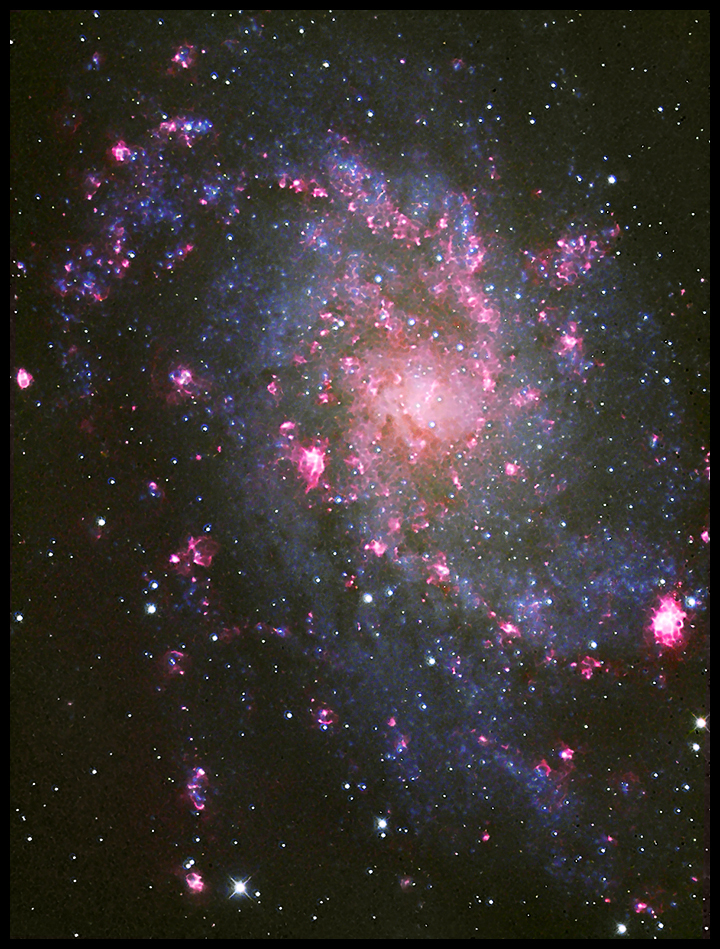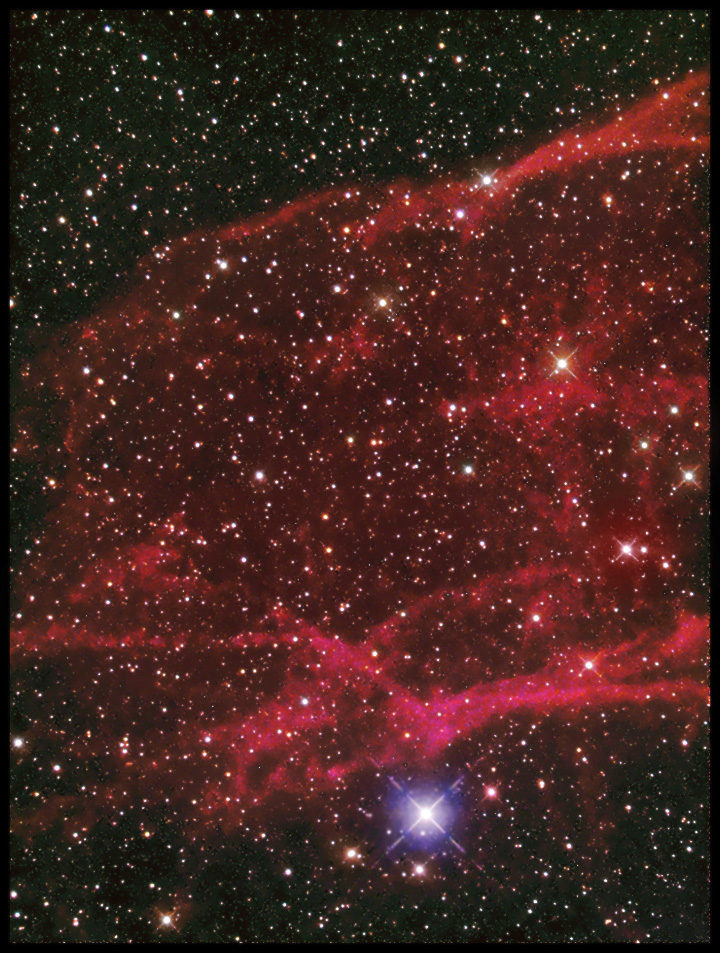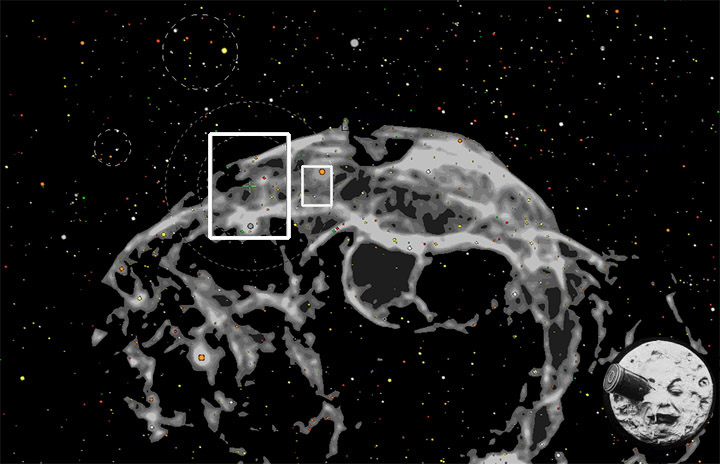01/21/2014. I captured plenty of G and B to go wtih the abundant Ha I've been collecting from M33. I've been working up to this one for a few nights.

M33 HaGBHa
6x1800s Ha (3 hours)
18x300s GB (3 hours total, 90 min each)
That's H-a used for the red channel (median filtered) and for luminance (deconvolved). The treatment is probably heavy-handed, but it's nevertheless what I've been working toward using every clear evening for a while now. The technique works but needs to be refined. For example, those outsized cyan holes in the red layer around not-so-bright stars won't do. Now that I'm pretty sure the mixing method works, I probably just need to start again with the raws and see where some of these issues enter.
Next, I tried the same technique hoping to capture some details within the huge supernova remnant S240, or Simeis 147, in Taurus.
Vital stats: 40,000 years ago, about 3,000 ly away. It covers a good bit of celestial real estate (make an "OK" sign with either hand, hold it out at arm's length, flash it at Orion, right over the hunter's head, and look through there -- it's about that big and you'll be looking right at it). It's so big I can only photograph about 5% of it at a time. That's what I did with the second half of last night.
The first Ha frame just barely caught two faint filaments way down in the "shadows." We'll see what I have in the morning. I'm guiding on a bright star (6.5 mag) using very short integrations (3 sec) even with the 7nm filter. Here, this is what the telescope control computer looks like when all is working properly:

CCD oriented to 270°, aiming point RA 05 37 19, Dec +26 40 51.
Clouds moved in about 2 A.M. and I only got four good H-a frames to go with five minutes (!) each of G and B. Still, that was enough data to let PixInsight stretch the left side of the histogram to bring out lots of hydrogen and to let Photoshop use the color data to render the stars in plausible hues. There are 64,000 levels of brightness available in this camera, and all the nebulosity after two hours of narrowband exposure lives in the lowest 3,000 levels:

Detail in S-240 (Simeis 147), a Supernova Remnant in Taurus
4x1800s (2h) H-a, 1x300s GB (10m total)
Ha used as R, HaGB overlayed on Ha as L
This is one of the fainter targets I've tried, but the challenge in getting a good photo of the remmant isn't its faintness so much as its extent: try to shoot something this big (the photo above ecompasses only about of 5% of the whole shebang) and faint all at once and controlling sky gradients will be serious business. It's been done, and very well, as Googling will show. Under bright skies, I'm delighted to get these details; an all-encompassing portrait will (probably) have to wait.

Guide 9.0 chart of S240.
The rectangles show the area in the photo above and the guide chip's field of view.
Moon is included for scale.
Except where noted, deep-sky photos are made with an SBIG ST2000XM CCD behind a 10-inch Astro-Tech Ritchey-Chretien carried on an Astro-Physics Mach1GTO. The CCD is equipped with Baader LRGB and 7nm H-a filters. The internal guide chip of the CCD most often keeps the OTA pointed in the right direction (I'll let you know when a Meade DSI and a separate OAG or guidescope takes its place). Camera control and guiding are handled by Maxim DL 5.12. The stock focuser on the AT10RC has been augmented with Robofocus 3.0.9 using adapters turned on the lathe downstairs. Maxim performs image calibration, alignment, and stacking; Photoshop CS4 and FocusMagic 3.0.2 take it from there. Gradient Xterminator by Russell Croman and Astronomy Tools by Noel Carboni see their share of work, too. Beginning in May 2013, PixInsight has taken over some of the heavy lifting for transfer function modification and deconvolution.
:: top ::